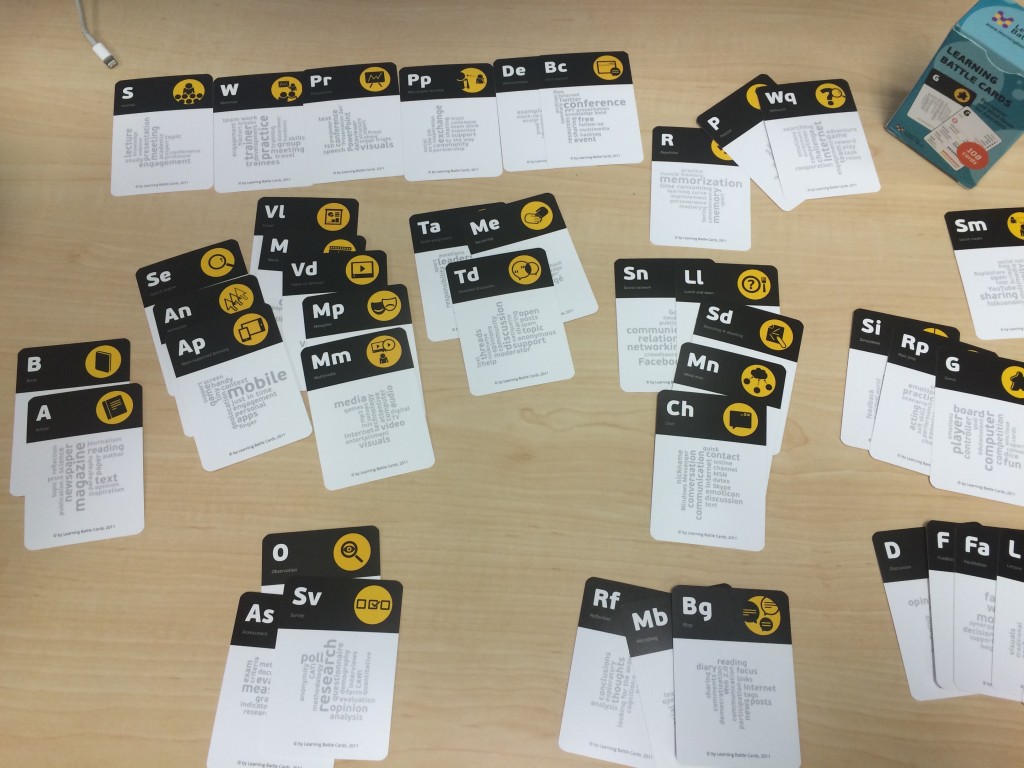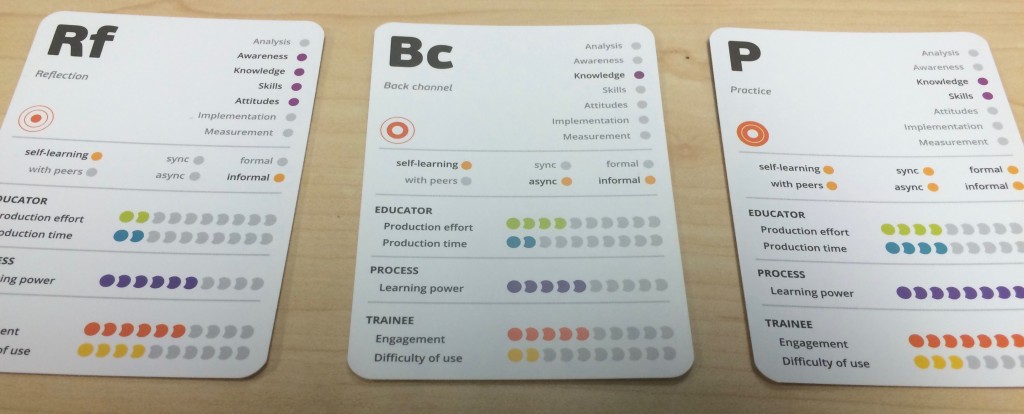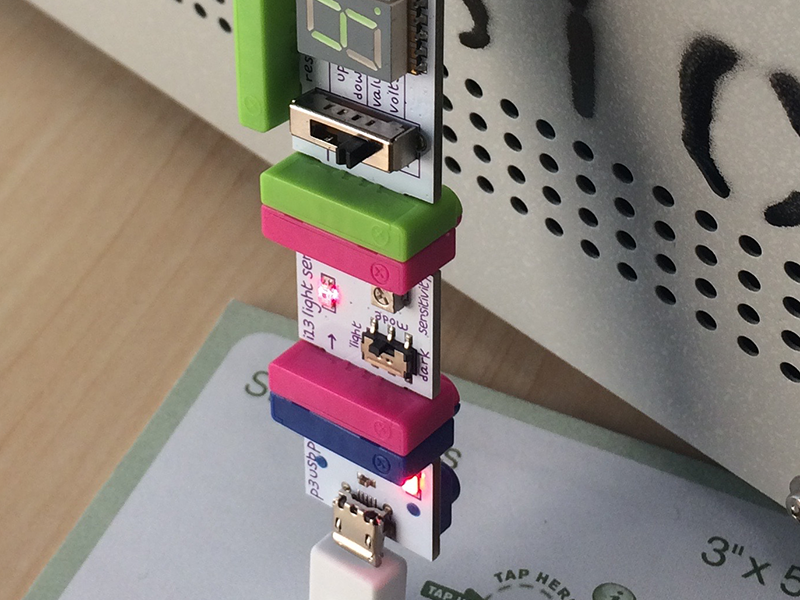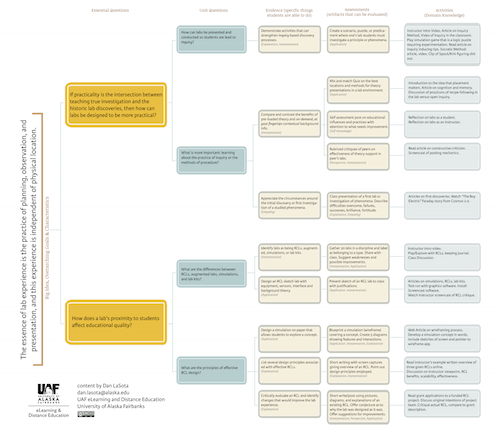So what happens when you have nine instructional designers who are tasked with developing curriculum to help UAF faculty develop online courses? What happens is that you see a variety of techniques in which content is presented, activities are practiced and the faculty reflect upon. Our most recent iTeach was presented in a period of four days in October 2015. The actual workshop was fast paced and the usual five days of content was compressed into four. Near the end everyone was ready to put the ideas into practice.
Previously I had contacted the designers behind Learning Battle Cards about helping them with their exciting gaming/taxonomy product. They have made an effort to create a training tool for designers and clients that illustrate the various techniques associated with the design, creation and learning process. The eCampus design team took a look at their almost final proofs of the cards and helped them with English translations. In return, we received a few sets of cards.
I’m pretty sure that we’re going to find a training use for these, amongst ourselves, and the faculty that we help train. For starters, I took a stab at representing the iTeach curriculum as the cards sorted by topological proximal location.
What do you think? Is this enough variety in activities? (not bragging, but iTeach is like this).
So the back of the cards have various attributes associated with the technique listed on the front of the card. It’s really important for instructors to think about the cost of using a particular instrument, both to themselves and to their students. The folks at LBC are working on a few illustrations using the cards, and activities that can be done with clients and designers. I’m already thinking of some strategy game. It would probably be applicable to people considering any sort of instruction these days.








